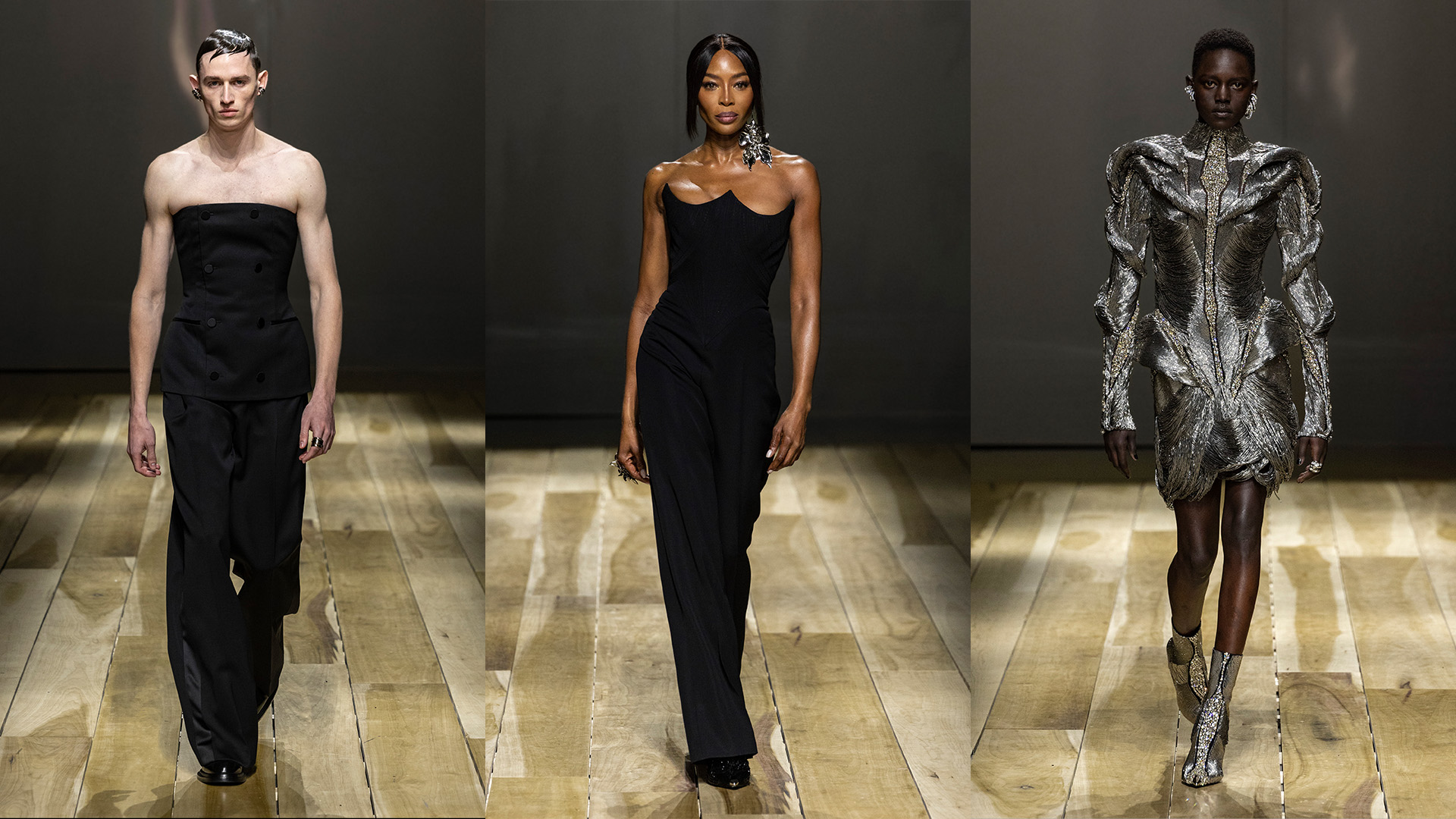Long before he pioneered the concept of the fashion show as provocative performance art, Lee ‘Alexander’ McQueen was an apprentice on Savile Row, the home of arguably the world’s best tailors. While there, he famously sewed lewd insults into the linings of suits fitted on the establishment clients he hated, setting a precedent for a lifetime spent stitching cloth with subversion in every thread. With her return to the Paris schedule, Lee McQueen’s former right-hand and Alexander McQueen’s current-day creative director Sarah Burton wanted to remind the world that tailoring is at the heart of what is now one of Britain’s only fashion houses. Sharp, severe, and not a single stitch out of place — her AW23 collection was all about the precision of what goes on in the hallowed halls of McQueen’s ateliers, sort of like an ode to the process of making clothes (a big theme this season). “It was looking at anatomy, the anatomy of tailoring,” she explained after the show. “It was a progression, which starts very kind of straight and structured. And then it begins to flash and twist and turn upside down. It’s like how you begin with a garment — you have to know that there’s a way to construct it, the bones of it, before you can dissect it and subvert it.”
As it happens, Sarah watched Tár, and loved the scene where Cate Blanchett gets measured for her bespoke suit, the visible chalk-marks on raw cloth of that process were echoed in her collection via chalky, interrupted pinstripes. Naomi Campbell opened the show in a long, narrow jumpsuit, the bustier defined by pin-sharp bust. More tailleur followed — sometimes all-in-one jumpsuits, other times double-breasted suits worn over white shirts with Windsor-knotted leather ties. Sometimes there were slashed cut-outs at the ribs or backless blazers that required a double-take. Mostly, they came with signature McQueen pointed shoulders and whittled waists, and occasionally, the trousers extended into the razor-blade stilettos, which Sarah explained was sort of like the iconic bumsters in reverse.
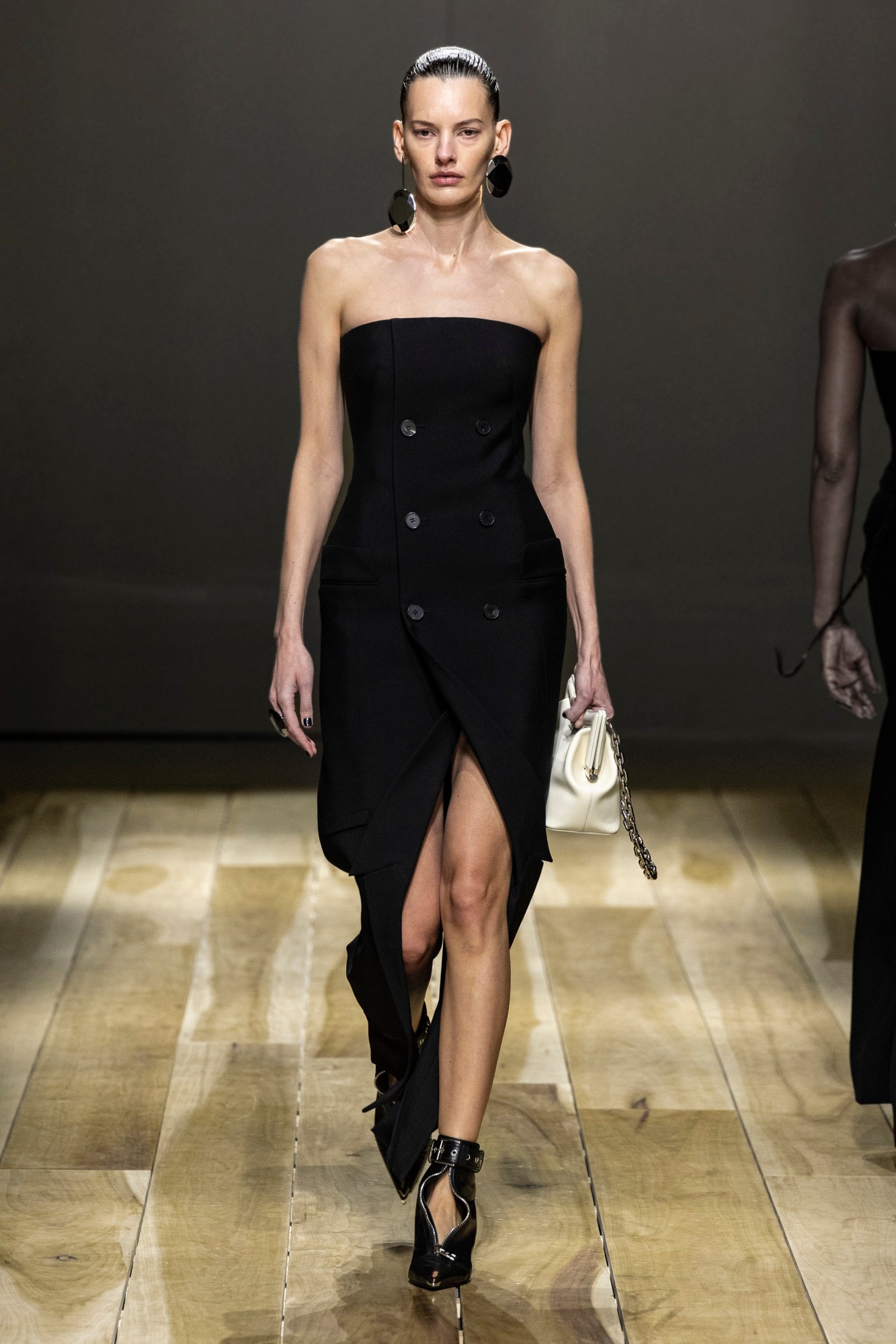
All of it related to “human anatomy, the anatomy of clothing, the anatomy of flowers,” as Sarah explained. Most importantly, she added, “the anatomy of McQueen”. There were other elements of McQueen’s DNA, for want of a better word, on display, too: the musical box sound of his ‘Joan of Arc’ collection from 1998, played in reverse; a video take on the stop-motion Victorian photography of Eadweard Muybridge ran upside down on the walls of the immersive circular space. “Because it feels like everything’s upside down in the world,” Burton reflected.
Elsewhere, actual anatomical drawings by Leonardo da Vinci inspired the jutting panels and cut-outs on one blood-red knitted dress, deconstructed layers of fisherman’s knits comprising a bone-white dress resembling a sculptural skeleton, and a recurring orchid motif transformed into carnal, flesh-like prints and embroideries on a full-skirted trench coat, backless tailoring, embossed on oversized flap bags, and forming both prints and silhouettes of the floor-sweeping gowns that closed the show. This was a reminder of McQueen’s reputation for fierce, statement-making clothes with a backbone of exquisite pattern-cutting. In a season where so many designers have decided to go back to the basics of making great clothes without the spectacle, the timing couldn’t be more prescient. McQueen has been doing that forever: spectacular shows and clothes. The rest of the world has tried to replicate its winning formula, often to lesser effect. Sometimes, it’s just genetic; this is McQueen’s DNA.
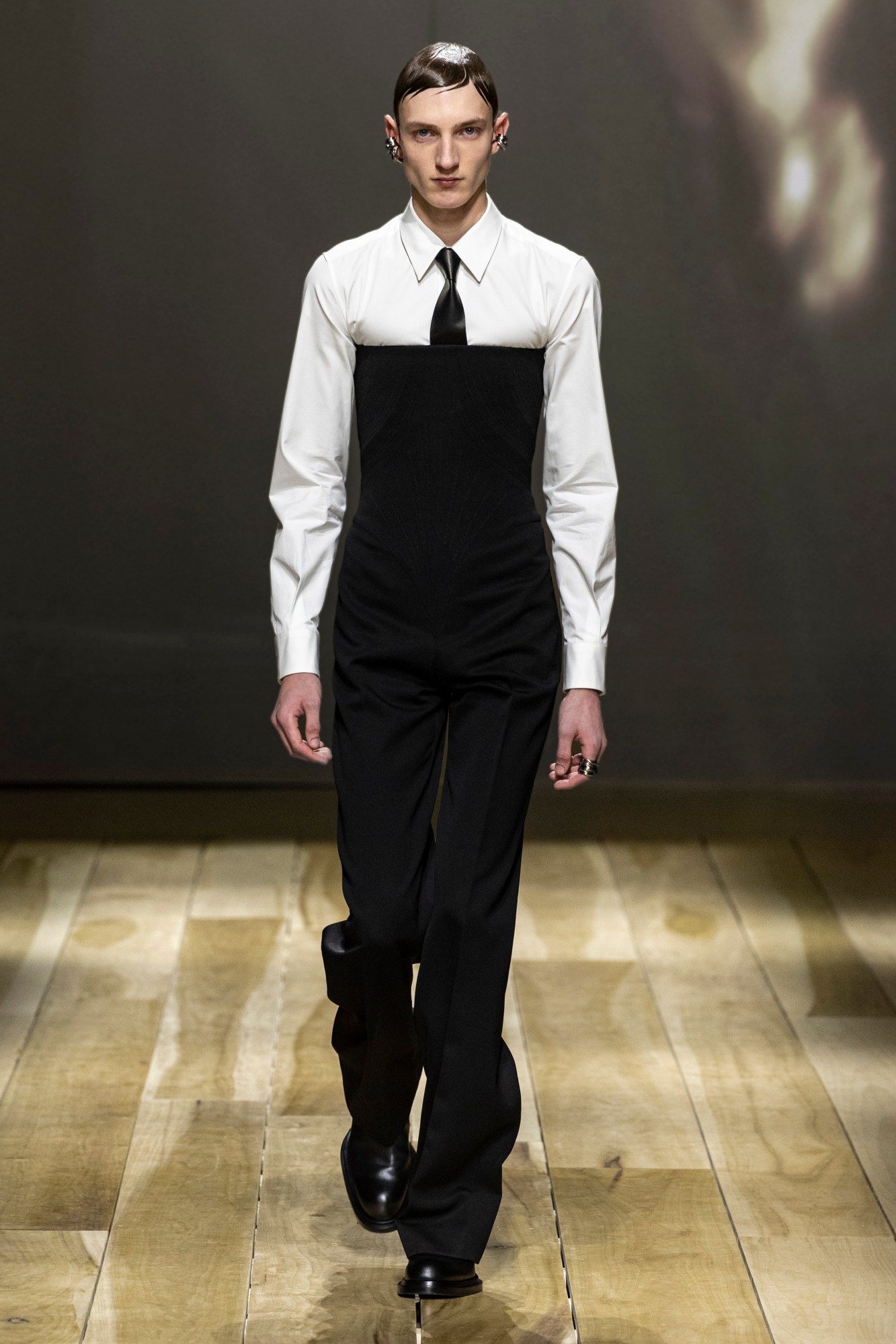
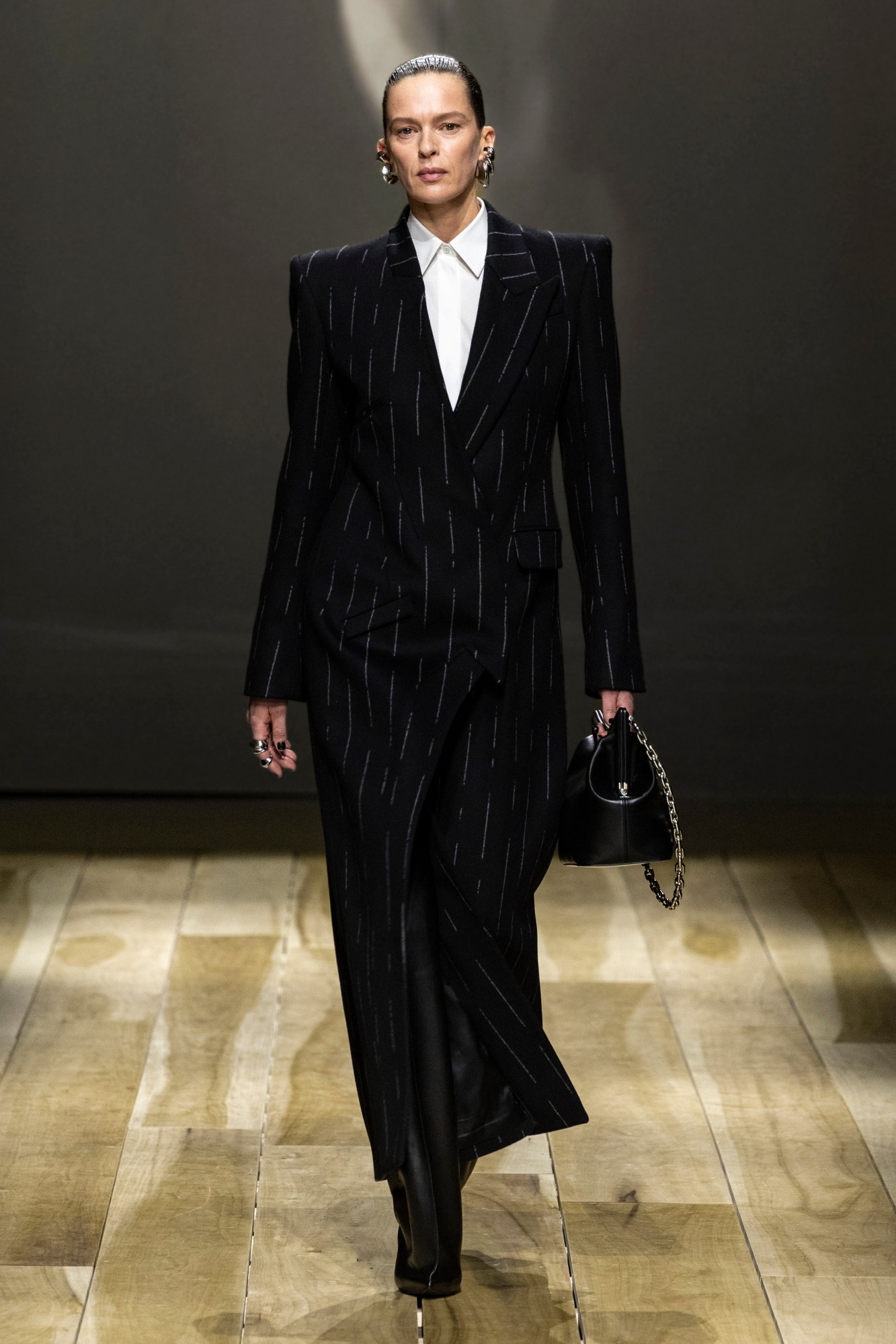
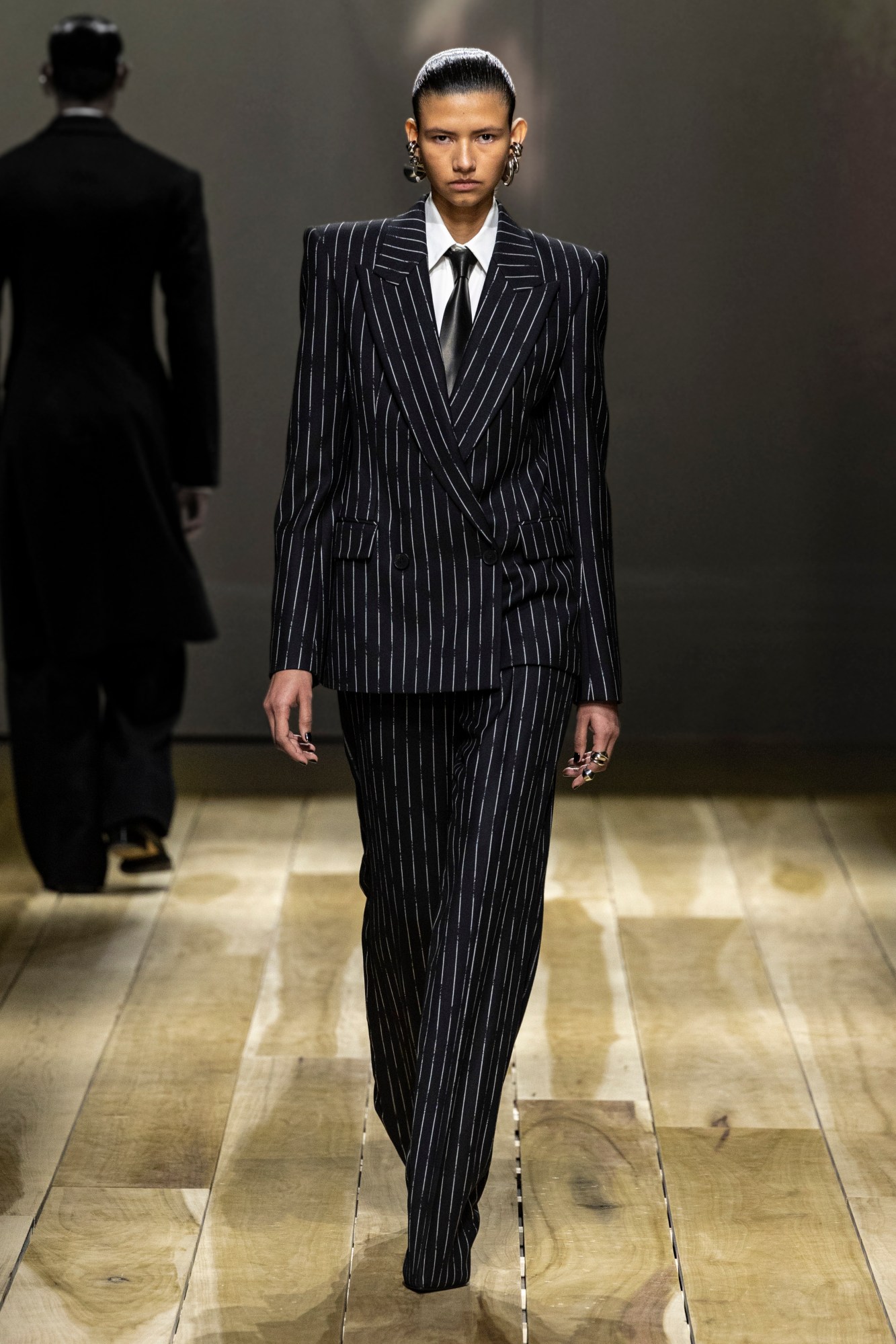
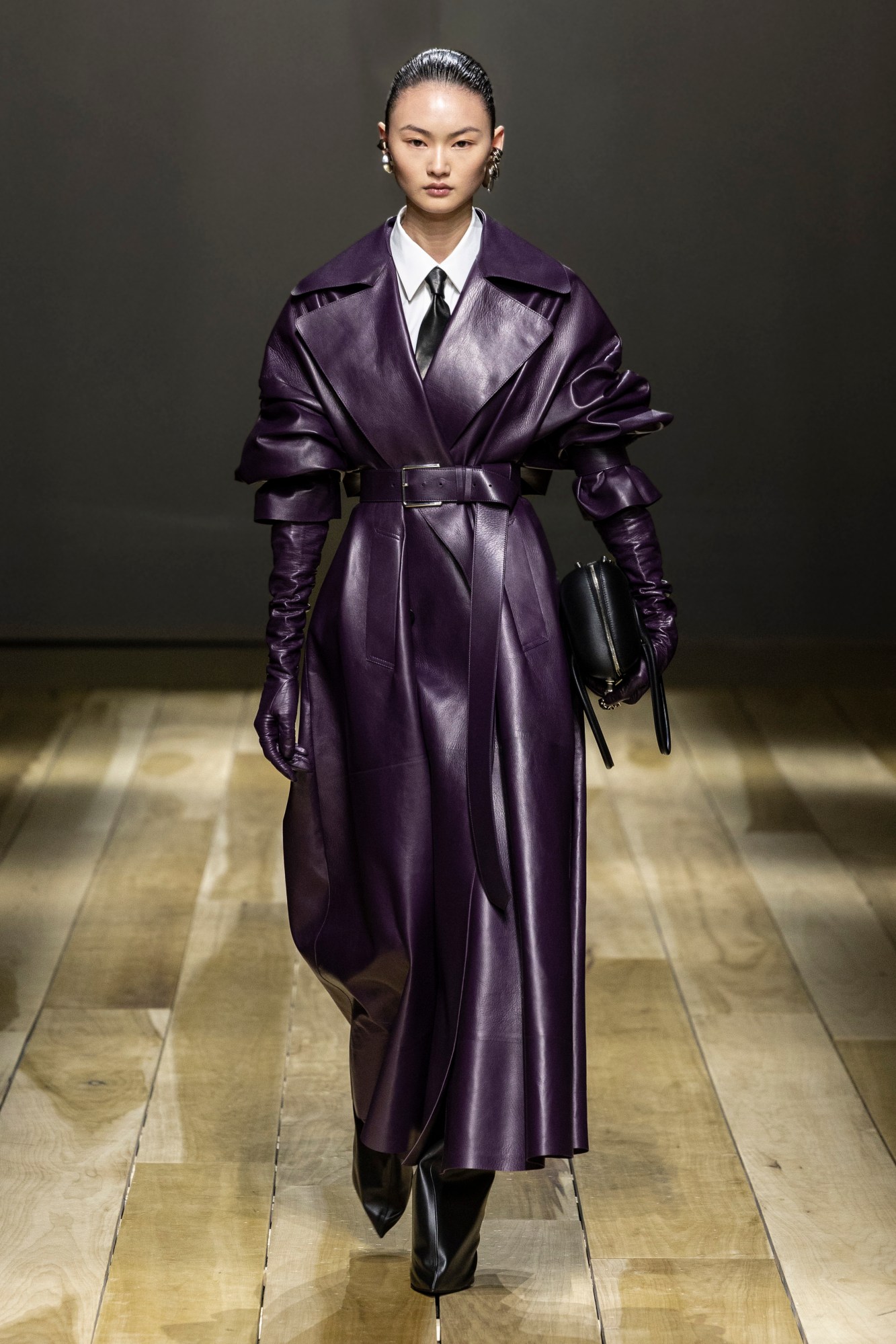
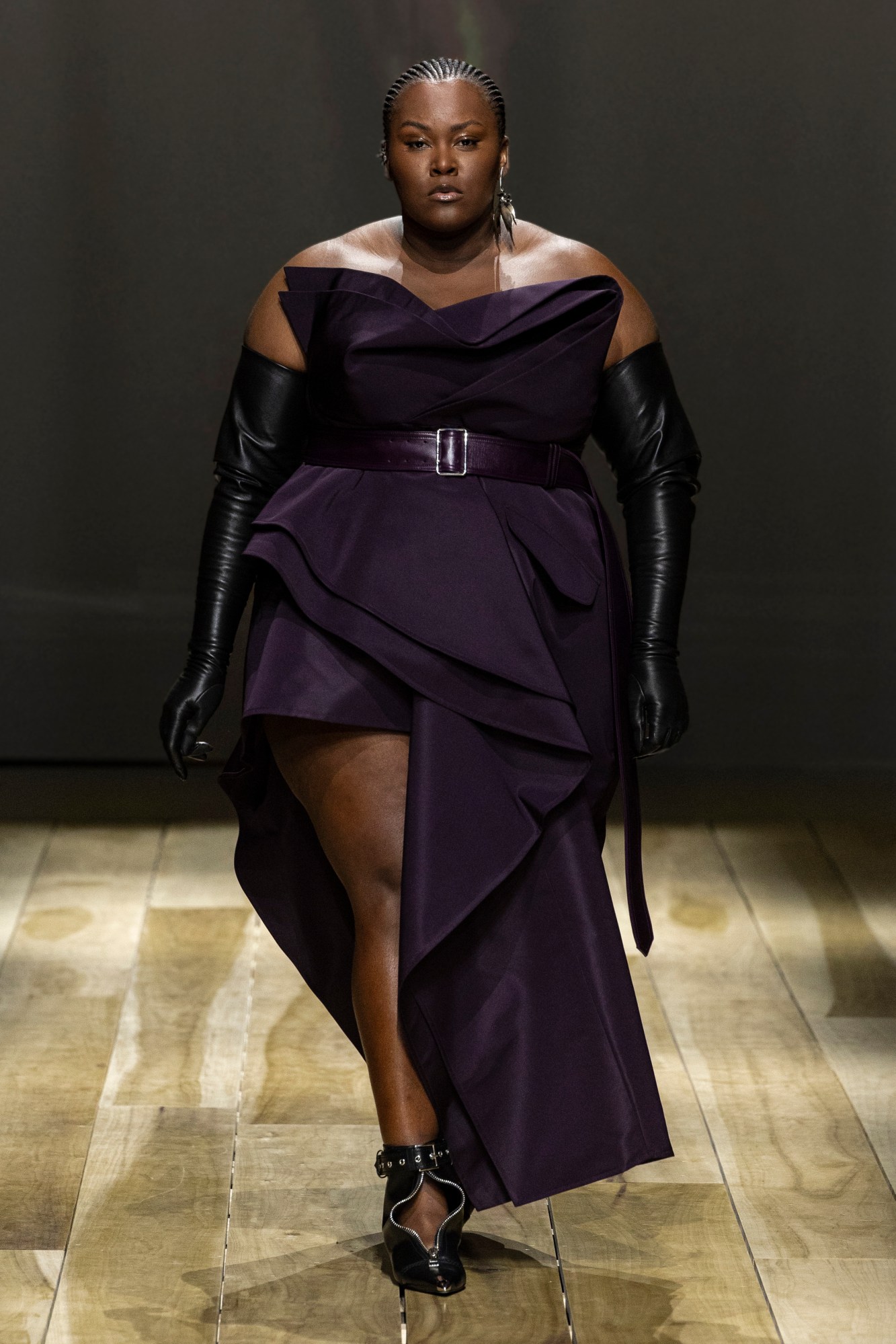
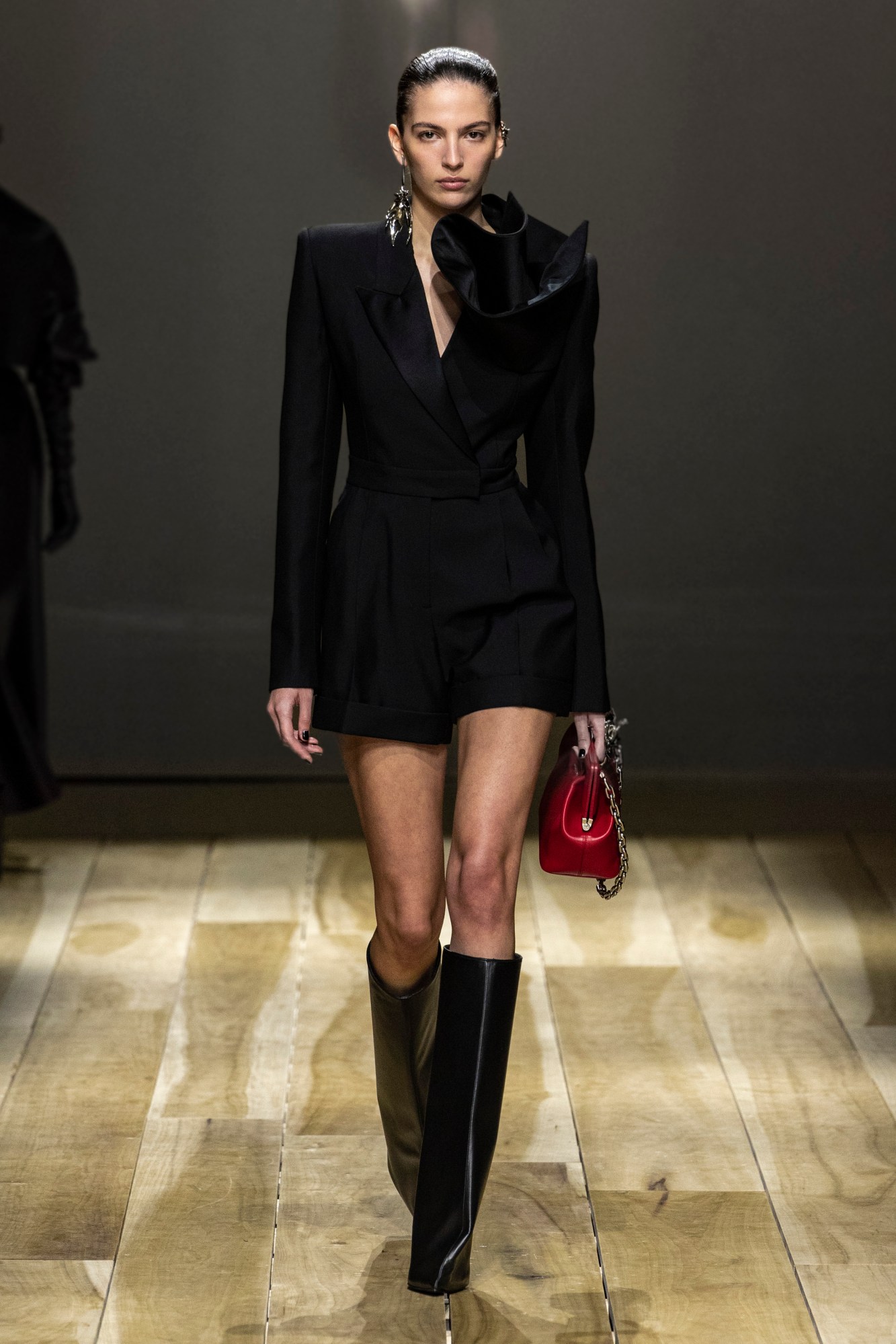
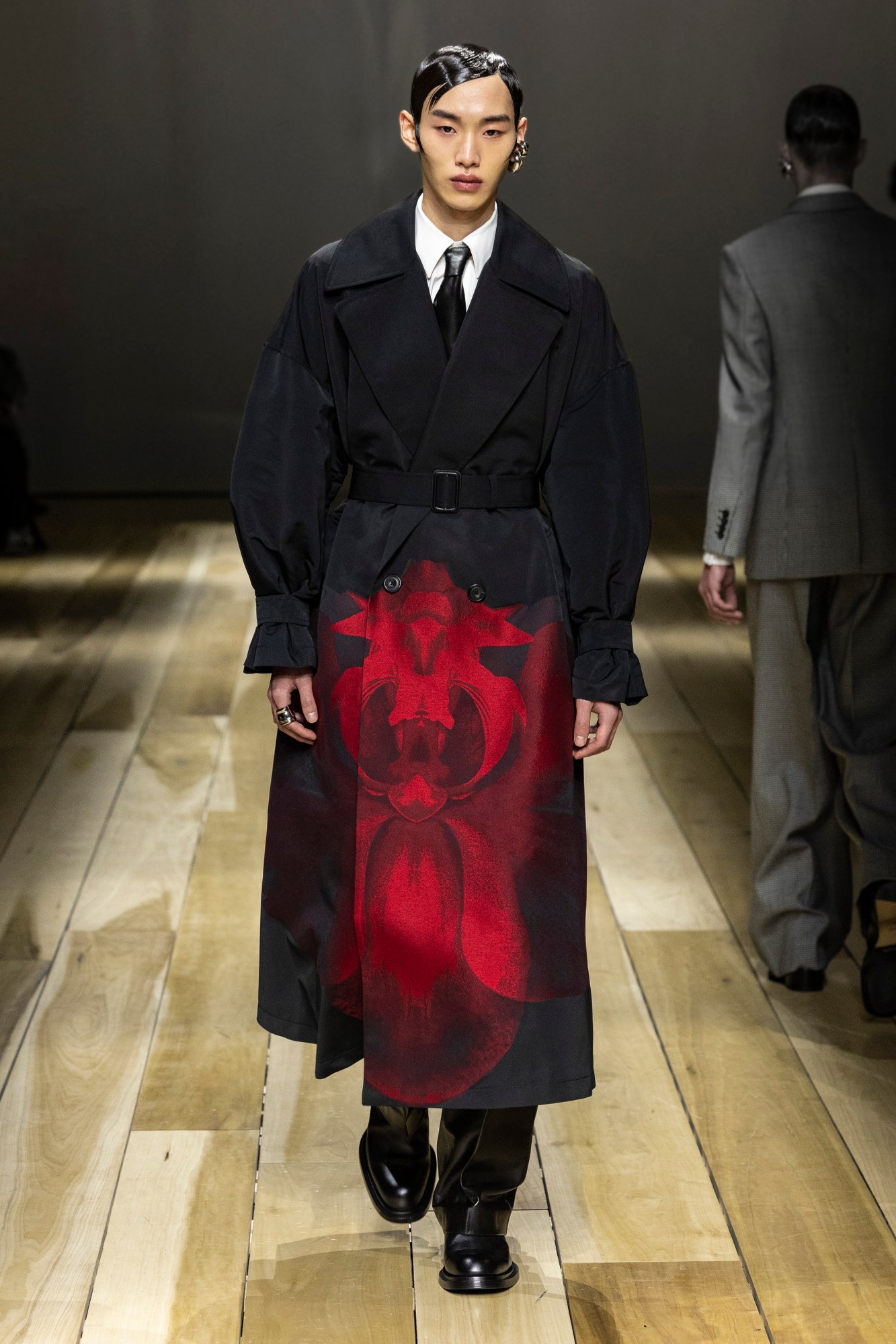
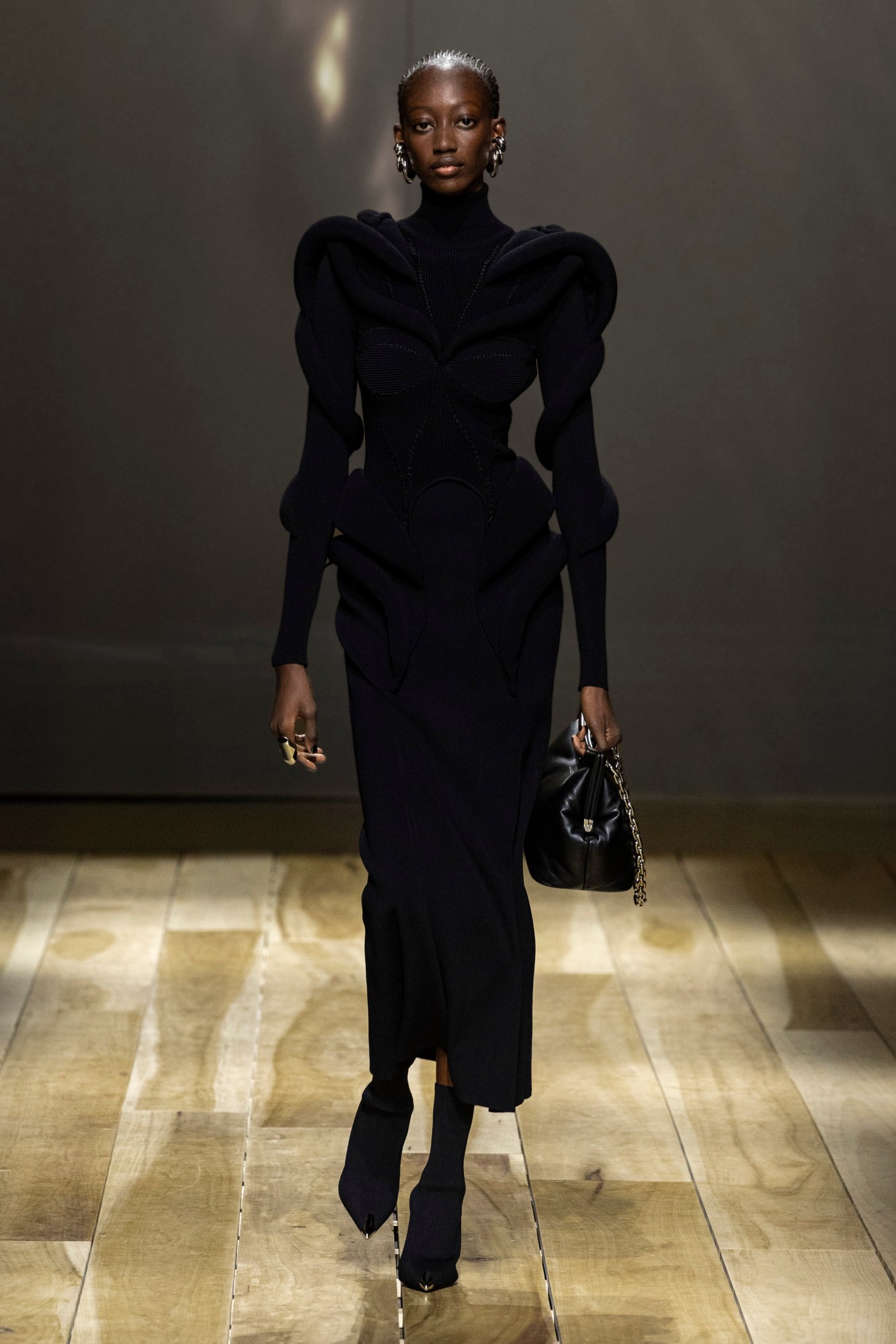

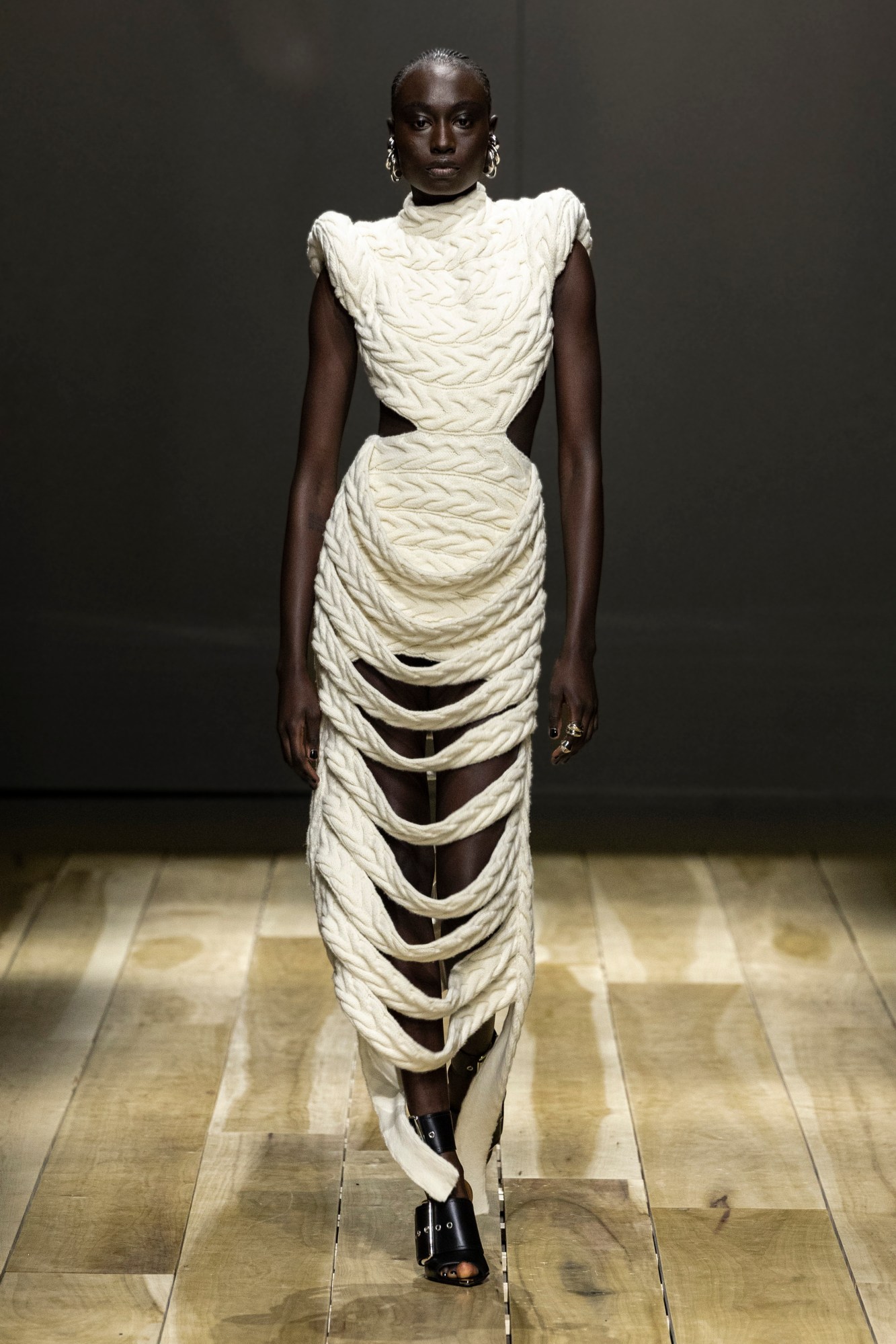
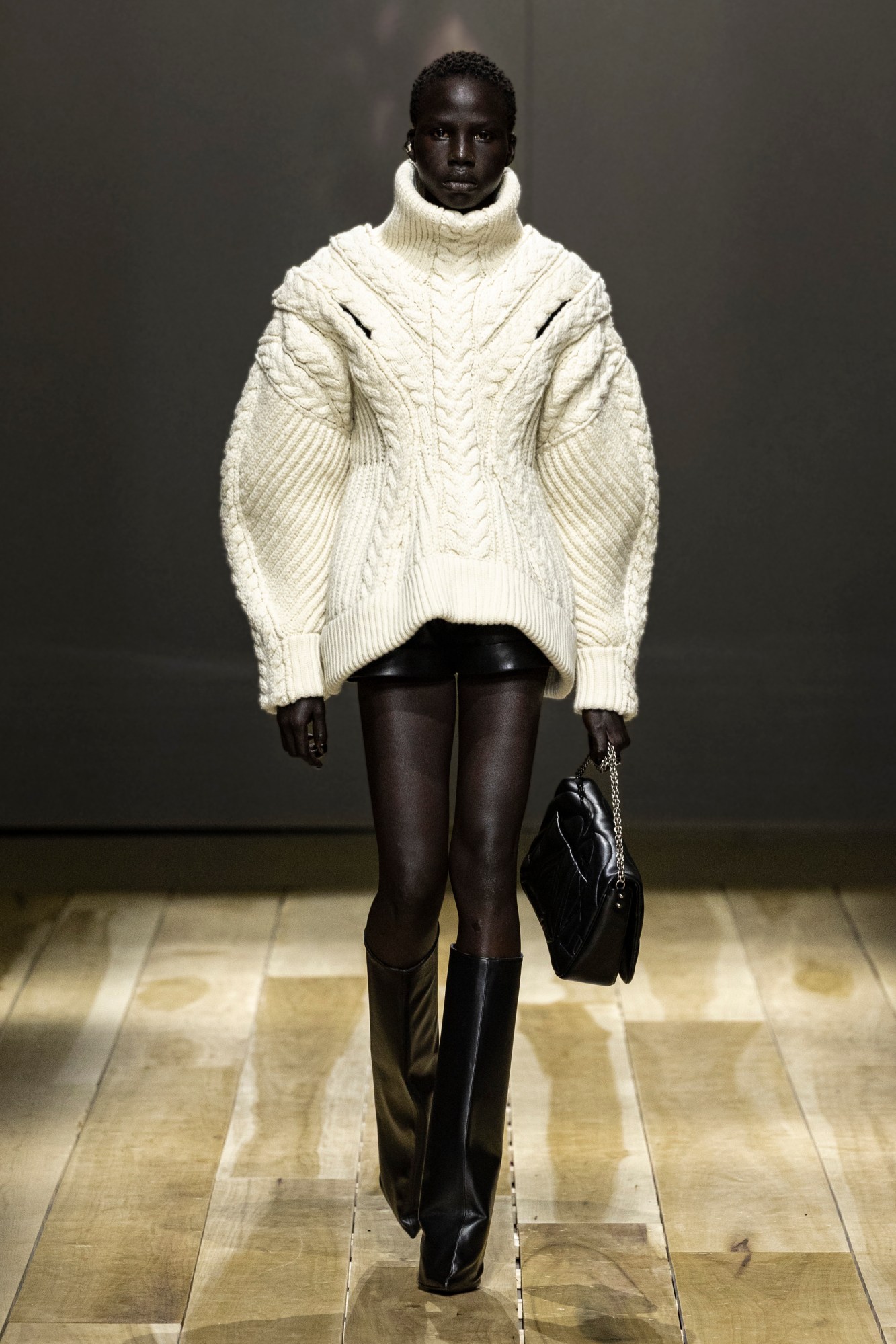

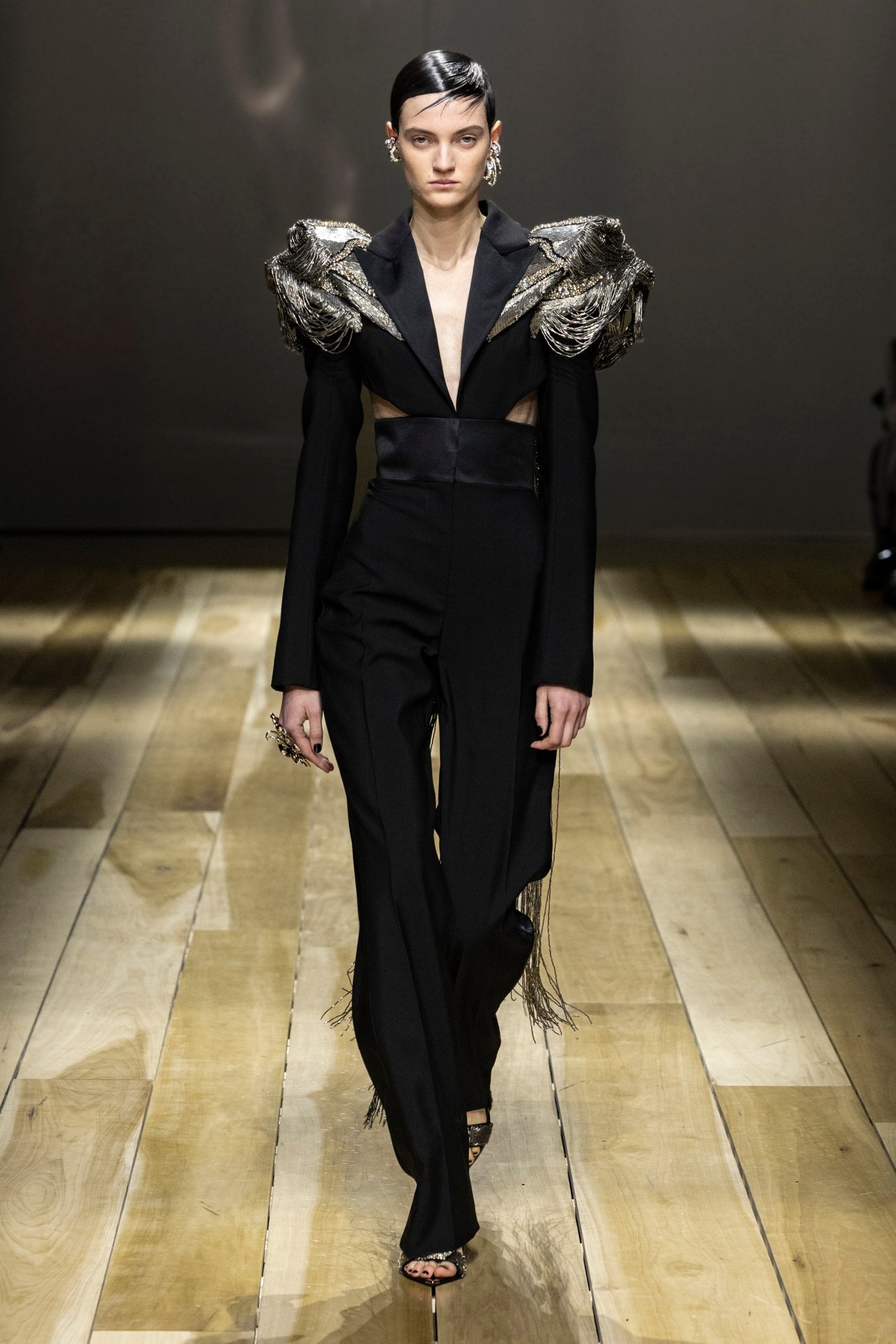
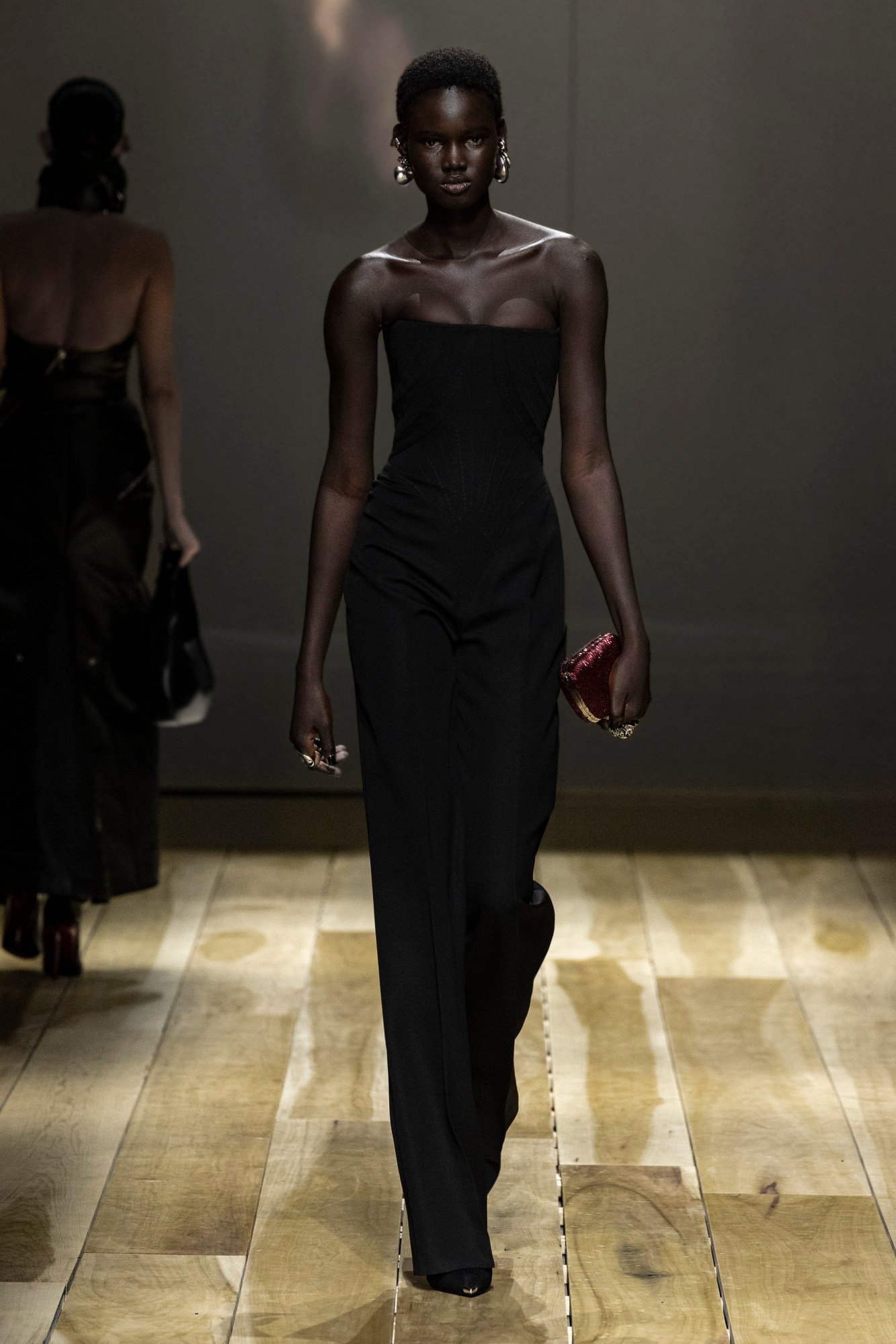
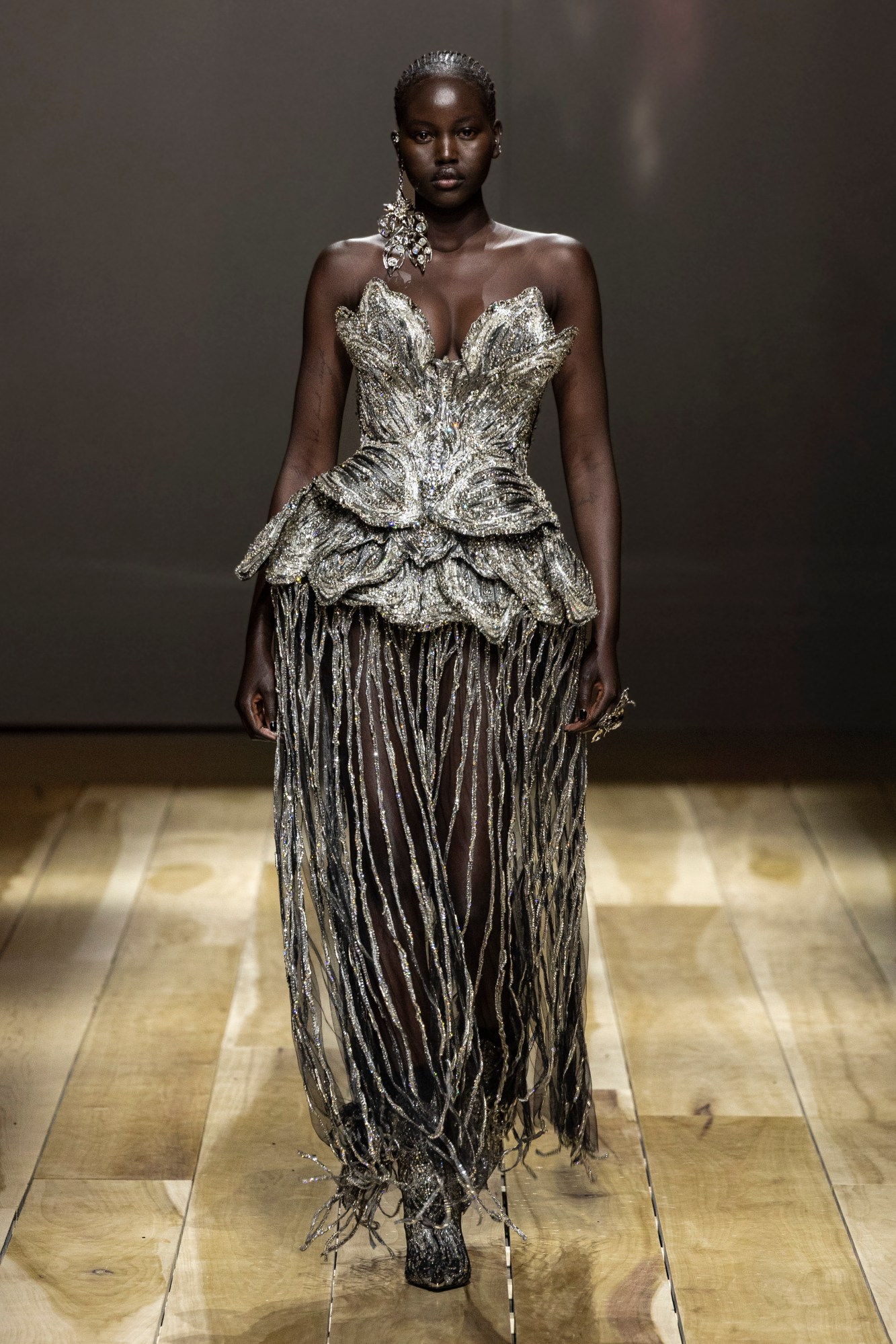
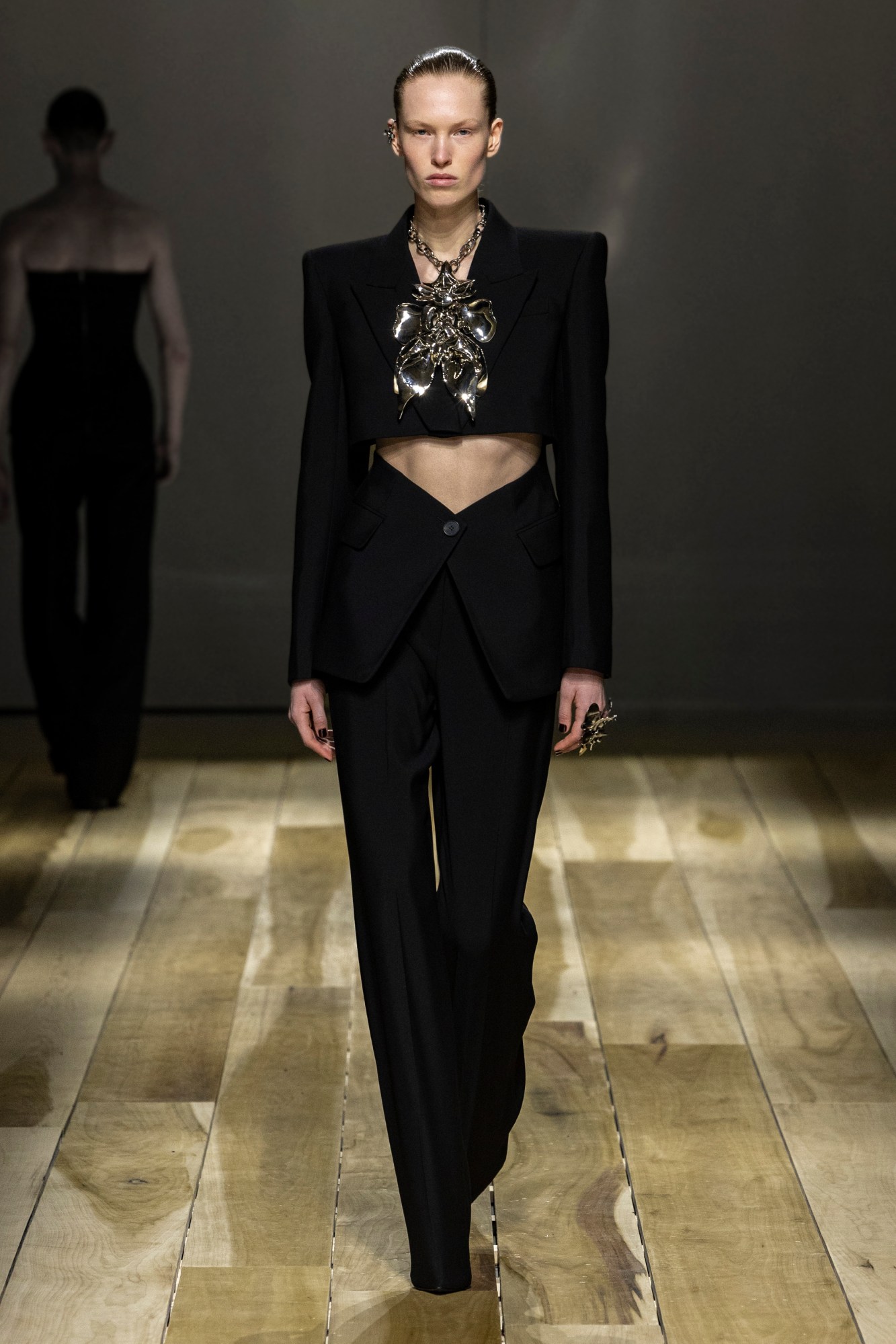
Credits
Images courtesy of Alexander McQueen
